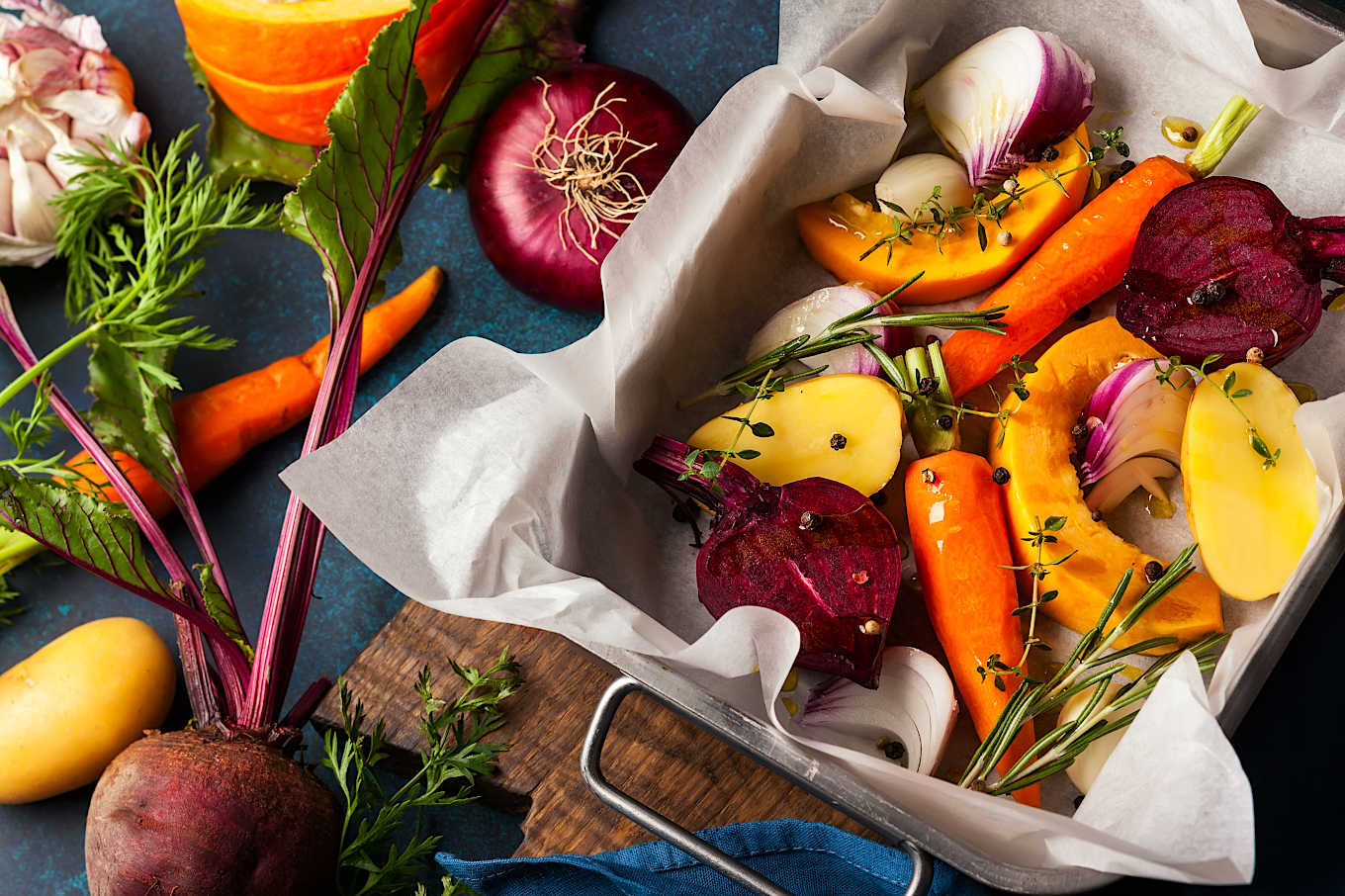Want to cook without oil? How to ditch the oil for every cooking method
- 3 Minutes Read
Believe it or not, it's not hard to cook without oil. Here are our best tricks and tips for successful and tasty results.
You may want to cut out extra calories. Perhaps you follow a whole-food, plant-based diet as promoted by Forks over Knives, McDougal, and Dean Ornish eating plans. Either way, oil-free doesn't necessarily mean fat-free. As a way of cooking, it limits the fats to unprocessed, nutrient-rich sources, such as nuts, seeds, olives, and avocados.
These methods naturally cook with liquid and do not require added oil.
Steam your veggies, and save boiling for pasta. Steaming minimizes nutrient loss and retains texture, whereas boiling means losing vitamins and minerals to the cooking water. Use a steamer basket insert, an electric steamer, or simply add some water to a pan and cover to steam. Add favorite seasonings after steaming.
Poaching cooks food submerged under about one inch of liquid, such as water, stock, milk, or wine. The liquid is heated to a gentle boil. It is difficult to overcook food with poaching, making it a popular no-oil cooking method for fish and eggs. Looking for a special dessert? Try poaching pears or peaches in regular or plant milk and top with a dash of cinnamon and nutmeg.
Simmering is another moist-heat cooking method. This gentle, slow-cooking technique used for soups, stews, and sauces does not rely on added oil. Simmering infuses the dish with the seasonings you add and concentrates the flavor. Missing the texture of creamy soup? Try purees of silken tofu, cooked potato, roasted cauliflower, or white kidney beans. A hand-held immersion blender is invaluable for this step.
Nonstick pans and woks make the best tools for oil-free sauteing and stir-frying. Compared to sauteing, stir-frying uses a higher heat, and food is stirred about more rapidly. Water can evaporate quickly with both cooking methods: add a few tablespoons of liquid every few minutes and keep moving the food around frequently in the pan.
Looking to add more flavor? Try cooking with broth, wine, vinegar, citrus juice, soy sauce, tamari, or coconut aminos instead of water.
Note: Nonfat cooking sprays are essentially oil-free based on their small serving size and ability to coat a pan evenly. Check that it is safe to use on your nonstick pan.
A go-to method for bringing out the flavors of vegetables, roasting allows them to brown and caramelize. Fortunately, added oil is unnecessary for this magic to happen. Use parchment paper, foil, or a nonstick silicone mat for easier cleanup.
Mist your veggies with broth or water to help seasonings adhere. Allow the oven to fully preheat, and place veggies on the baking pan in a single layer with sufficient space among them, so they roast instead of steam. For extra browning (who can resist crispy roasted potatoes?), crank up the temperature for the last few minutes of cooking.
Technically, "frying" implies the use of oil, whether in a pan or a deep-fryer. You may not be able to authentically "fry" without oil, but you can mimic the crispy texture frying offers.
Do you miss the crunch of breaded and fried foods? Coat fish, poultry, or vegetables with chopped nuts or whole-grain breadcrumbs and bake.
Consider investing in an air-fryer. The rapid air circulation and high-temperature help create fried foods' consistency without the use of oil.
True, omitting oil in baked goods results in a different texture, but that's not necessarily a bad thing. Muffins, quick breads, and bars do well with the extra moisture coming from added applesauce, pumpkin, or mashed bananas. Pureed dates can also add a rich flavor and texture, especially in chocolaty treats. Vanilla yogurt (or plant yogurt) can add a tangy flavor and extra protein.
For extra flavor, texture, and nutrition, you may include fat sources from such whole foods as nuts, nut flours, seeds (including chia seed and ground flaxseed), and shredded coconut.
Grilling brings a deep and savory flavor to meats, poultry, and vegetables. Although oil isn't needed for successful grilling, the concern is food sticking to the grill. Fortunately, a silicone grill mat or a nonstick grill basket solves this issue. You can also seal your food in a foil or parchment paper packet with a bit of added liquid and cook over the grill.
No matter what oil-free cooking method you choose, punch up the flavor and texture with healthy toppings. Drizzle tahini or balsamic glaze over your dish, or add a handful of freshly chopped herbs, toasted nuts or seeds, or shredded coconut.
You can use our recipe import feature to add recipes from these sites to your collection and modify them to suit your preferences.
Forks Over Knives
Fatfree Vegan
Minimalist Baker (use oil-free filter)
Plant-Based Cooking
Still new to MyNetDiary? Learn more today by downloading the app for FREE.
Foods & Recipes->Oils Nutrients->Fats